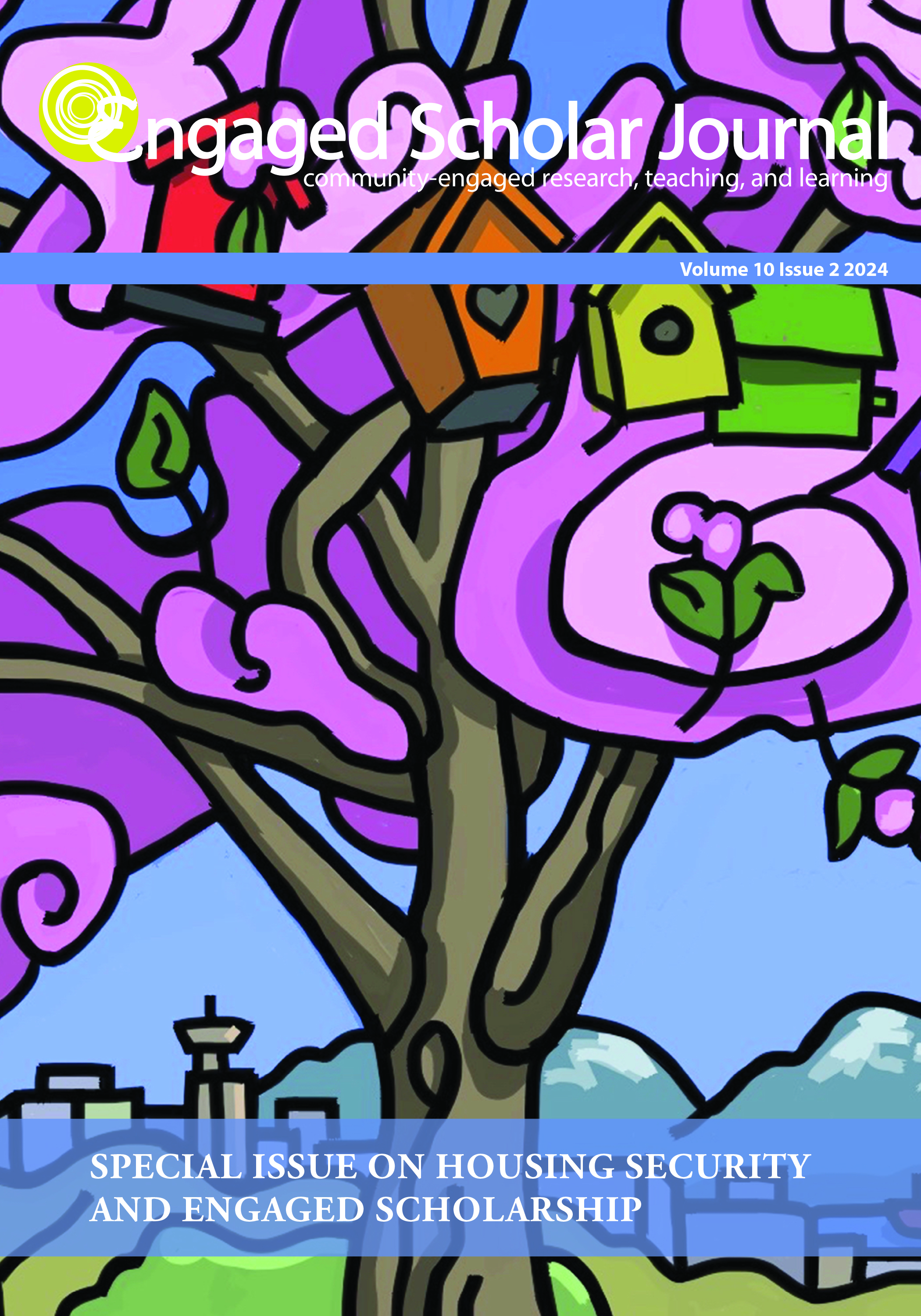Less Talk, More Builds: The Mixed-Income Residential Tower Model of the University of Winnipeg Community Renewal Corporation
DOI:
https://doi.org/10.15402/esj.v10i2.70852Keywords:
affordable housing, social real estate, social enterprise, community-university partnerships, non-profit corporationsAbstract
The search for and replication of scalable models for affordable housing amid North America’s housing insecurity crisis has been frustratingly slow. Governments are flailing—and, so far, failing—as they try to put in place the necessary policies and incentives for the private, public, and non-profit sectors to accelerate the construction of the millions of new affordable units required to confront the crisis. This paper highlights one model whose replication is underway in Winnipeg’s downtown core: that of a mixed-income, mixed-use residential tower offering nearly half of its units at affordable rental prices for marginalized residents and designed, built, and managed with a deep commitment to multi-dimensional sustainability. The catalyst for this initiative is the University of Winnipeg Community Renewal Corporation (UWCRC), a non-profit foundation that works in partnership with community organizations and is now Winnipeg’s leading social real estate developer. The Corporation is the second component of the model. While there are no perfect strategies for solving the housing crisis, UWCRC’s approach deserves to be widely known, deeply studied, and rapidly adapted and replicated at scale by universities, colleges, and other public institutions in urban centres throughout North America. Engaged scholars can play important roles in this effort.
References
Andrée, P., I. Findlay and D. Peacock. (2018). Transformations through “Community First” Engagement, Engaged Scholar Journal, 4(2), i-viii.
Aurand, A., D. Emmanuel, E. Foley, M. Clarke, I. Rafi, and D. Yentel. (2023). The Gap: A Shortage of Affordable Rental Homes. National Low Income Housing Coalition, Washington, DC.
Baldwin, D.L. (2021). In the Shadow of the Ivory Tower. How Universities are Plundering Our Cities. New York. Bold Type Books.
CCPH Board of Directors. (2013). Position Statement on Authentic Partnerships. Community-Campus Partnerships for Health. https://ccphealth.org/partnering/principles-of-partnering/
Fisher River First Nation. (2020). Fisher River Cree Nation unveils Manitoba’s biggest solar farm, a source of Bullfrog Power’s green energy.
Garton, P. (2021). Types of Anchor Institution Initiatives: An Overview of University Urban Development Literature. Metropolitan Universities, 32(2), 85-105. https://doi.org10.18060/25242
Jackson. E.T. (2018). Catalyst for Sustainability: The Achievements, Challenges, Lessons, and Prospects of the University of Winnipeg Community Renewal Corporation. J.W. McConnell Family Foundation, Montreal.
Kreiner, M. (ed). (2022). Imagining Democracy: More than a mile wide and an inch deep-Essays by Sherman L. Kreiner. Cindy Coker Publisher. Moffatt, M. and K. Boessenkool. (2023). How Canada can create more rental housing. The Globe and Mail, May 1, 2023. https://www.theglobeandmail.com/opinion/article-how-canadacan-create-more-rental-housing/
Richter, T., M. P. Moffatt, and M. Brooks. (2023). The National Housing Accord: A Multi-Sector Approach to Canada’s Rental Housing Crisis. Canada’s Alliance to End Homelessness, PLACE Centre at the Smart Prosperity Institute, and REALPAC, Ottawa.
Rodin, J. (2007). The University & Urban Revival: Out of the Ivory Tower and Into the Streets. Philadelphia: University of Pennsylvania.
Saint Louis University. (2019). Habitat Saint Louis and SLU Partner to Build Housing Near Campus. Saint Louis. https://www.slu.edu/news/2019/january/slu-habitat-new-homes.php
University of Winnipeg Community Renewal Corporation. (2023-2024). https://uwcrc.ca/
Wiewel, W., F. Gaffikin and M. Morrisey. (2000). Community in University Partnerships for Affordable Housing. Cityscapes: A Journal of Policy Development and Research. 4(1), 27-45.
Downloads
Published
How to Cite
Issue
Section
License
Copyright (c) 2024 Edward T. Jackson, Jeremy Read

This work is licensed under a Creative Commons Attribution 4.0 International License.
Authors who publish with this journal agree to the following terms:
- Authors retain copyright and grant the journal right of first publication with the work simultaneously licensed under a Creative Commons Attribution License CC BY 4.0 that allows others to share the work with an acknowledgement of the work's authorship and initial publication in this journal.
- Authors are able to enter separate, additional contractual agreements for the non-exclusive distribution of the journal's published version of the work (e.g., post it to an institutional repository or publish it in a book), with an acknowledgement of its initial publication in this journal.
- Authors are permitted to post their work online (e.g., in an institutional repository or on their website) after the publication of their work in the Engaged Scholar Journal.
- Please note that while every opportunity will be taken to ensure author participation in the editing process, due to time constraints final copyediting changes may be made before publication to ensure APA adherence throughout all submissions.




